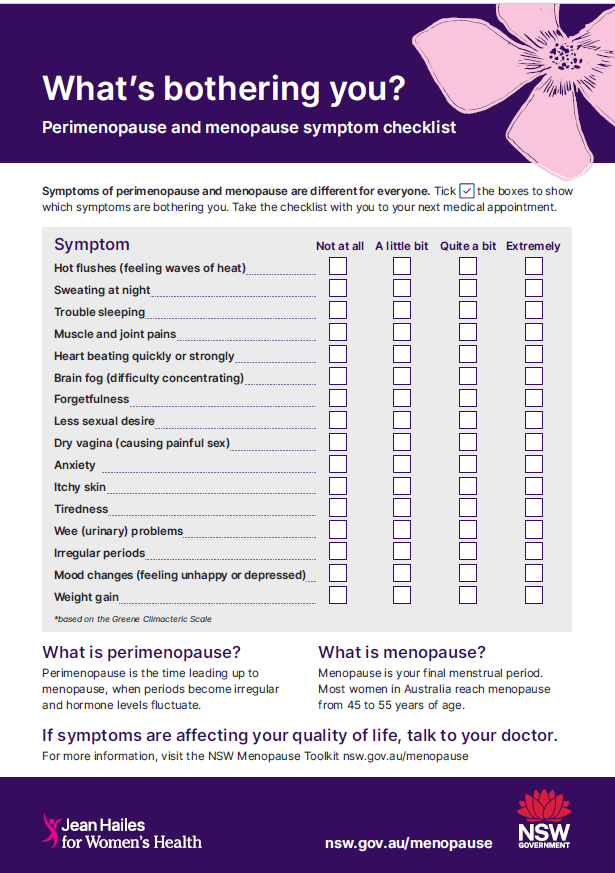“Although vaginitis, or inflammation of the vagina, can result from estrogen-related vaginal atrophy, it can also be caused by a yeast or bacterial infection or by irritation from…”.1
Umbrella
What may the Vaginitis Umbrella include?
Depending on the Source (DotS) this Umbrella may include:
- Atrophic Vaginitis
- Inflammation of the Vagina
- Vaginal Inflammation
- Vaginal Yeast Infection
- Vaginitis
- Vulvovaginitis
Vagina
What is the vagina?
DotS the definition of the vagina may vary. The (United States) MedlinePlus’ definition is:
“The vagina is the female body part that connects the womb (uterus) and cervix to the outside of the body”.2
Vaginitis
What is vaginitis?
DotS the definition of vaginitis may vary. In Vaginitis the (United States) Eunice Kennedy Shriver National Institute of Child Health and Human Development’s definition is:
“Vaginitis is an inflammation or infection of the vagina that can cause itching, burning, pain, discharge, and bad odor. Vaginal symptoms are a common reason women seek medical care. There are many types of vaginitis, each with its own cause, symptoms, and treatment”.3
Signs and Symptoms
What can vaginitis signs and symptoms include?
In Vaginitis: Symptoms & Causes – Symptoms the (United States) Mayo Clinic elaborate on:
- Change in color, odor or amount of discharge from your vagina
- Vaginal itching or irritation
- Pain during sex
- Painful urination
- Light vaginal bleeding or spotting”.4
In Vaginitis: Check If You Have Vaginitis the (United Kingdom) NHS elaborate on:
- An itchy or sore vagina
- Vaginal discharge that’s a different colour, smell or thickness to usual
- Vaginal dryness
- Pain when peeing or having sex
- Light vaginal bleeding or spotting
- Sore, swollen or cracked skin around your vagina
You might not have all these symptoms”.5
Vaginal Discharge
Is there an association between vaginal discharge and the type of vaginitis?
The Mayo Clinic explain:
- Bacterial vaginosis. You might develop a grayish-white, foul-smelling discharge. The odor, often described as a fishy odor, might be more obvious after sex
- Yeast infection. The main symptom is itching, but you might have a thick white discharge that resembles cottage cheese
- Trichomoniasis. An infection called trichomoniasis (trik-o-moe-NIE-uh-sis) can cause a greenish-yellow, sometimes frothy discharge”.6
Vaginitis Cause
What may cause vaginitis?
In Vaginitis: Symptoms & Causes – Causes the Mayo Clinic elaborate on:
 “The cause is usually a change in the balance of vaginal bacteria or an infection. Reduced estrogen levels after menopause and some skin disorders also can cause vaginitis”.7
“The cause is usually a change in the balance of vaginal bacteria or an infection. Reduced estrogen levels after menopause and some skin disorders also can cause vaginitis”.7 The North American Menopause Society note:
Bacterial Vaginosis
What is bacterial vaginosis (BV)?
DotS the definition of BV may vary. In Bacterial Vaginosis the NHS’s definition is:
In Bacterial Vaginosis: What Are the Symptoms of BV? the Office on Women’s Health, United States Department of Health and Human Services, Womenshealth.gov elaborate on:
- Unusual vaginal discharge. The discharge can be white (milky) or gray. It may also be foamy or watery. Some women report a strong fish-like odor, especially after sex
- Burning when urinating
- Itching around the outside of the vagina
- Vaginal irritation
These symptoms may be similar to vaginal yeast infections and other health problems. Only your doctor or nurse can tell you for sure whether you have BV”.10
Treatment
How is vaginitis treated?
According to the NHS:
For example, you may need:
- Antifungal medicine for thrush
- Antibiotics for a sexually transmitted infection
- Vaginal moisturiser, lubricant or hormone treatment for menopause symptoms
- Steroid medicine for a skin condition”.11
Genital Hygiene
How can women keep their genital area clean and dry when they have vaginitis?
In Vaginal Itching and Discharge – Adult and Adolescence: Home Care the MedlinePlus elaborate on:
- Avoid soap and just rinse with water to clean yourself. Using a spray bottle to wash with water after urination may be helpful
- Soaking in a warm but not hot bath may help your symptoms. Dry thoroughly afterward. Rather than using a towel to dry, you may find that gentle use of warm or cold air from a hair dryer may result in less irritation than the use of a towel
Avoid douching. Many women feel cleaner when they douche, but it may actually worsen symptoms because it removes healthy bacteria that line the vagina. These bacteria help protect against infection.
Avoid current popular trends like vaginal steaming which may increase risk of vaginal infections”.12
Health Care Provider
What if I think I have vaginitis?
If you think you have vaginitis, it may be in your best interest to choose to talk to your health care provider about this. The Mayo Clinic explain:
“While not all vaginal problems can be prevented, regular checkups can help ensure that problems affecting the vagina are diagnosed as soon as possible. Don’t let embarrassment prevent you from talking to your health care provider about concerns you have about vaginal health”.13
In Vagina: What’s Typical, What’s Not – What Are Signs or Symptoms of Vaginal Problems? the Mayo Clinic elaborate on:
- A change in the color, odor or amount of vaginal discharge
- Vaginal redness or itching
- Vaginal bleeding between periods, after sex or after menopause
- A mass or bulge in your vagina
- Pain during intercourse”.14
Health Topics A-Z
Where may I find Health Topics A-Z related to the Vaginitis?
In Health Topics A-Z you may find:
Links
Where may I find Links related to Vaginitis?
Your Country may have Links similar to:
Links
This Links List to third party websites is neither comprehensive nor exhaustive. Inclusion on this Links List does not imply endorsement or recommendation. Non-inclusion on this Links List does not imply non-endorsement or non-recommendation. Third party websites are not under the control of Meno Martha International Menopause Directory. Third party websites may contain explicit medical images and/or sexual references. Please read Meno Martha International Menopause Directory’s Links Policy before proceeding to a Link. Please contact Webmaster if you experience a problem with a Link.New or Updated
- 10 Embarrassing Questions You Should Ask Your Doctor
- Bacterial Vaginosis
- Bacterial Vaginosis
- Bacterial Vaginosis
- Bacterial Vaginosis (BV)
- Bacterial Vaginosis – CDC Fact Sheet
- Candidiasis/Yeast Infection [Multiply Languages]
- Care Down There
- Chlamydia
- Chlamydia
- Chlamydia Infections
- Chlamydia Infections In Women
- Douching
- Essential Information: Caring for Your Skin Down There
- Essential Information: Latex Allergy
- Essential Information: See Your Doctor If
- Essential Information: Some Facts About the Vulva [+ Image]
- Feminine Odor Problems? What Every Woman Needs To Know
- Genital Itch for Women [Multiply Languages]
- Gonorrhoea
- Gonorrhoea
- International Society for Sexual Medicine: Public
- International Society for Sexual Medicine: Sexual Health Topics
- International Society for the Study of Vulvovaginal Diseases
- International Society for the Study of Vulvovaginal Diseases: Patient Handouts
- International Society for the Study of Women’s Sexual Health
- International Society for the Study of Women’s Sexual Health: Find A Provider
- Later Years (Around 50 Years and Over): Menopause and Post Menopause Health – Sexual Wellbeing, Intimacy and Menopause [+ Video: Menopause Is the End of Your Sex Life]
- Medical Advice: Bacterial Vaginosis
- Medical Advice: Chronic Thrush (Also Known As Candida)
- Medical Advice: DIV (Desquamative Inflammatory Vaginitis)
- Menopause Patient Information [Videos] 2. Talking To Your GP About Menopause
- Menopause: Understanding the Changes and Finding Relief | Dr Susan Davis | The Proof Podcast EP 256
- Myths and Suggestions: Myths About Hormone Replacement Therapy
- Myths and Suggestions: Myths About Thrush
- National Center for Complementary and Integrative Health: Herbs At A Glance
- National Center for Complementary and Integrative Health: How Safe Is This Product or Practice?
- Navigating Menopause: Expert Insights and Solutions | Dr Susan Davis | The Proof Podcast EP 245
- Patient Information
- Patty Brisben Foundation for Women’s Sexual Health: Guide To Sexual Health Providers
- Patty Brisben Foundation for Women’s Sexual Health: New! Sexual Anatomy 101
- Pelvic Inflammatory Disease (PID)
- Perimenopause and Menopause Symptom Checklist

- Prosayla Supported By ISSWSH [International Society for the Study of Women’s Sexual Health]
- Sexually Transmitted Diseases
- Sexually Transmitted Diseases (STDs)
- Sexually Transmitted Infections (STIs)
- The Health Issues We Don’t Like To Discuss
- The Normal Vulva [Multiply Languages]
- Thrush In Men and Women
- Tips To Help Manage Menopause Symptoms
- Trichomoniasis
- Trichomoniasis
- Trichomoniasis
- Vagina
- Vagina: What’s Typical, What’s Not?
- Vaginal and Vulval Pain: Know the Different Causes and When To Seek Help
- Vaginal Discharge
- Vaginal Discharge
- Vaginal Discharge: When To See A Doctor
- Vaginal Dryness
- Vaginal Itching and Discharge – Adult and Adolescent
- Vaginal Odour
- Vaginal Yeast Infection
- Vaginal Yeast Infections
- Vaginitis
- Vaginitis
- Vaginitis
- Vaginitis
- Vaginitis
- Vaginitis [Multiply Languages]
- Vaginitis: Diagnosis & Treatment
- Vaginitis: Symptoms & Causes
- Video Series-2022: Discussing Sexual Health Concerns With Your Health Care Professional
- Video Series-2022: Perimenopause, Signs, Symptoms, and Solutions
- Video Series-2023
- Vulva and Vagina
- Vulva and Vaginal Health: Getting the Right Advice
- Vulval Irritation
- Vulval and Vaginal Conditions
- Vulval Care Advice
- Vulvovaginal Atrophy
- Vulvovaginal Candidiasis
- Vulvovaginal Health
- Vulvovaginal Symptoms After Menopause
- Vulvovaginitis
- Webinars: Previous – Pay Attention on Your Way In! The Vulva Is An Important Organ Too
- Webinars: Previous – The Microbiome and Nutrition in Midlife Women
- Why Didn’t Anyone Tell Me This? Episode 3: Dr Annice Mukherjee: Your Essential Menopause Toolkit
- Yeast Infections
Sources
Where may I find the Sources quoted?
You may find the Sources quoted at:
Sources
- Vaginal Discomfort: Discomfort Not Directly Related to Menopause – Vaginitis. North American Menopause Society https://www.menopause.org/for-women/sexual-health-menopause-online/causes-of-sexual-problems/vaginal-discomfort Accessed: 12 December 2023
- Vaginitis. Last Reviewed Date: 11 February 2022. Eunice Kennedy Shriver National Institute of Child Health and Human Development https://www.nichd.nih.gov/health/topics/vaginitis Accessed: 12 December 2023
- Vagina: Information. Review Date: 04 November 2021. MedlinePlus https://www.nlm.nih.gov/medlineplus/ency/article/002342.htm Accessed: 12 December 2023
- Vaginitis: Symptoms & Causes – Symptoms. 22 December 2021. Mayo Clinic https://www.mayoclinic.org/diseases-conditions/vaginitis/symptoms-causes/syc-20354707 Accessed: 12 December 2023
- Vaginitis: Check If You Have Vaginitis. Page Last Reviewed: 27 February 2023. NHS https://www.nhs.uk/conditions/vaginitis/#symptoms-of-vaginitis Accessed: 12 December 2023
- Vaginitis: Symptoms & Causes – Symptoms. 22 December 2021. Mayo Clinic https://www.mayoclinic.org/diseases-conditions/vaginitis/symptoms-causes/syc-20354707 Accessed: 12 December 2023
- Vaginitis: Symptoms & Causes – Causes. 22 December 2021. Mayo Clinic https://www.mayoclinic.org/diseases-conditions/vaginitis/symptoms-causes/syc-20354707 Accessed: 12 December 2023
- Vaginal Discomfort: Discomfort Not Directly Related to Menopause – Vaginitis. North American Menopause Society https://www.menopause.org/for-women/sexual-health-menopause-online/causes-of-sexual-problems/vaginal-discomfort Accessed: 12 December 2023
- Bacterial Vaginosis. Page Last Updated: 27 October 2022. NHS https://www.nhs.uk/conditions/bacterial-vaginosis/ Accessed: 12 December 2023
- Bacterial Vaginosis: What Are the Symptoms of BV? Page Last Updated: 31 May 2022. Office on Women’s Health, United States Department of Health and Human Services, Womenshealth.gov https://www.womenshealth.gov/a-z-topics/bacterial-vaginosis Accessed: 12 December 2023
- Vaginitis: Treatments for Vaginitis From A Doctor. Page Last Reviewed: 27 February 2023. NHS https://www.nhs.uk/conditions/vaginitis/#treating-vaginitis Accessed: 12 December 2023
- Vaginal Itching and Discharge – Adult and Adolescent: Home Care. Review Date: 23 August 2023. MedlinePlus https://www.nlm.nih.gov/medlineplus/ency/article/003158.htm Accessed: 12 December 2023
- Vagina: What’s Typical, What’s Not – What Can I Do To Keep My Vagina Healthy? 06 December 2022. Mayo Clinic https://www.mayoclinic.org/healthy-lifestyle/womens-health/in-depth/vagina/art-20046562 Accessed: 12 December 2023
- Vagina: What’s Typical, What’s Not – What Are Signs or Symptoms of Problems? 06 December 2022. Mayo Clinic https://www.mayoclinic.org/healthy-lifestyle/womens-health/in-depth/vagina/art-20046562 Accessed: 12 December 2023



